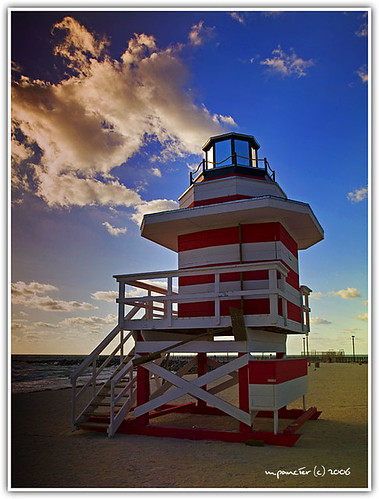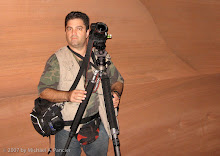
It's Monday once more infidels. I'd say Rainy Days and Mondays always bring me down, but I don't mind rainy days in the Autumn (as long as there are no 75+ mph winds attached to them of course). It's dry season here in South Florida and it gets dusty and all that jazz which makes it murder on those with allergies. But the positive thing about dry season is that as water levels drop in the Glades, and the migrants head down here, it soon will be time to go out to take photos of the birds. Even now, in October, there have been reports of raptors, owls, and mating herons and other subjects in Delray Beach, Venice Rookery, Fort De Soto and Vierra. I may try to get an early drive in sometime soon to see if I can get some images of a Kestral over in Delray Beach.....my friend Fabiola has gotten some amazing shots of this interesting raptor. Need to get up there early to catch the bird.
But there's a change in the air. I'm seeing the cormorants perched on the light posts which is the 1st sign down here of the coming season. And we're supposed to get a cold front tommorrow, a whopping chilly 65 degrees expected, which I'm sure my northern friends will be laughing about.
From my earlier post, you'll see I've resorted to taking images of urban birds just to keep my skills honed. Got a killer one of a landing ibis which I'll post soon. In any event, ma is in day four post surgery. Triple bypass and valve repair and she's singing in ICU which is a feat considering she had a breathing tube on Thursday. What sucks about ICU is those damn visiting hours, 9-10, 1-2, 5-6, and 9-10 pm. Makes is rough to go down to Kendall to see her during the day, especially now that I am at work. So needless to say, things have been crazy this month now that this Thursday will be 3 weeks in the hospital for ma. The one thing it teaches me though is that everything we do early on will have its consequences later in life. In ma's case, I'm sure smoking for nearly 40 years was not good. Most folks think that smoking screws up the lungs. The reality is that it screws up the heart. Ma's lungs are in good shape. As for me, it's healthy living from now on.
In sum, I came across an interesting article in the WSJ regarding the five most important photography books. I will post it here in its entirety.
You Ought to Be in PicturesBooks that bring photography into focus.BY RICHARD WOODWARDSaturday, October 21, 20061. "Looking at Photographs" by John
Szarkowski(Museum of Modern Art, 1973).Our best writer on photography and one of the nation's finest critics on any subject, John Szarkowski directed the photography department at the Museum of Modern Art in New York for 29 years. Read any of his dozens of essays elucidating the work of other photographers (he is a good one himself) and you will be rewarded. Free of academic jargon and avant-garde attitude, his artistic judgments reflect the character of the man, a stubborn American who prefers to figure things out on his own. His book "The Photographer's Eye" (1966) is better known, but this series of extended notations on 100 photographs from MoMA's collection is a distillation of his gifts for witty concision, plenitude of spirit and tact.
2. "Photography in Print" edited by Vicki Goldberg(Simon & Schuster, 1981).The "present" in the subtitle "Writings from 1816 to the Present" means 1978, the latest entry in this excellent collection. It still offers the widest compass of perspectives on a vast topic. Essays by Roland Barthes, Susan Sontag and A.D. Coleman should satisfy postmodernists. Interviews with Walker Evans and W. Eugene Smith, as well as statements of high artistic purpose by Alfred Stieglitz, Edward Weston and Ansel Adams, make the case for the purists. But some of the happiest surprises come from writings by tangential figures such as Oliver Wendell Holmes and George Santayana--and Charles Baudelaire, who loathed photography: "Our squalid society rushed, Narcissus to a man, to gaze on its trivial image on a scrap of metal."
3. "Before Photography" by Peter Galassi (Museum of Modern Art, 1981).Peter Galassi, John Szarkowski's successor at MoMA, explores the origins of photography not as a scientific discovery but as a logical product of the Western artistic tradition. Early 19th-century painters, including Corot, Constable and the Danish realist Christen Kobke, depicted humble subjects and landscape views that seem "caught" by the eye, Mr. Galassi says, presaging a machine that would see everything in front of it indiscriminately. The "syntax of immediate, synoptic perceptions and discontinuous, unexpected forms" that we recognize as the language of photography would perhaps not have happened, in Mr. Galassi's judgment, if many artists had not already begun to picture the world in this revolutionary way.
4. "The Mind's Eye" by Henri Cartier-Bresson (Aperture, 1999).The "surrealizing bourgeois," as Henri Cartier-Bresson called himself, was a mercurial figure who imparted rigor and grace to everything he touched, from a drawing pencil to his Leica. The fountain pen was no exception. This thin but charming collection is a canonical manifesto of 20th-century art. It includes tributes to fellow photographers ("for me, Robert Capa wore the dazzling matador's costume, but he never went in for the kill"), passing remarks on places he had worked (Russia, Cuba, China) and notes on his own remarkable philosophy of craft. "To take photographs is to hold one's breath when all faculties converge in the face of fleeting reality," he writes. "It is at that moment that mastering an image becomes a great physical and intellectual joy."
5. "River of Shadows" by Rebecca Solnit (Viking, 2003).The conquest of the American West in the 19th century and the growth of northern California as a 20th-century hub of technological creativity can both be traced back, says Rebecca Solnit, to the invention in the 1870s of a super-fast camera shutter and film by the English photographer Eadweard Muybridge. Her tour de force of imaginative scholarship connects railroads, telegraphy, American foreign policy, the multinational corporation and sublime Western landscapes with Muybridge's invention. "Time was at his command as it had never been at anyone's before," she writes. "A new world had opened up for science, for art, for entertainment, for consciousness, and an old world had retreated farther." Muybridge fired the starting gun that announced modernity.
Mr. Woodward is an arts critic, journalist and filmmaker in New York.Copyright © 2006 Dow Jones & Company, Inc. All Rights Reserved.



1 comments:
I love that lighthouse chair.
Hope your mother's recovery continues in a speedy and uneventful way. I've had y'all on my mind.
Post a Comment